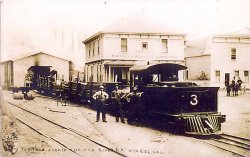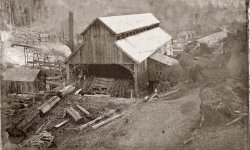
MAY CONTAIN NUTS

Search Shorpy
SHORPY ART

Framed or unframed, desk size to sofa size, printed by us in Arizona and Alabama since 2007. Explore now.
Join and Share
Ad-Free Shorpy
Shorpy is funded by you. Patreon contributors get an ad-free experience.
Learn more.

Recent comments
- Lost in Toyland
- And without gloves
- If I were a blindfolded time traveler
- Smoke Consumer Also Cooks
- Oh that stove!
- Possibly still there?
- What?!?
- $100 Reward
- Freeze Frame
- Texas Flyer wanted
- Just a Year Too Soon
- WWII -- Replacing men with women at the railroad crossing.
- Yes, Icing
- You kids drive me nuts!
- NOT An Easy Job
- I wonder
- Just add window boxes
- Icing Platform?
- Indiana Harbor Belt abides
- Freezing haze
- Corrections (for those who care)
- C&NW at Nelson
- Fallen Flags
- A dangerous job made worse
- Water Stop
- Passenger trains have right of way over freights?
- Coal
- Never ceases to amaze me.
- Still chuggin' (in model form)
- Great shot
Member Photos
The Shorpy
Print Emporium
Print Emporium
Search Shorpy
Search results -- 30 results per page
- Humboldt Bay
- The Alta ferry on Humboldt Bay in California ran between Arcata and Eureka and was owned by the ... port. Today it is a mud flat at low tide.
Both The Humboldt Bay is off of Eureka and the Arcata Bay is off of Arcata. The ferry ... Posted by kevhum - 05/18/2007 - 12:48am -
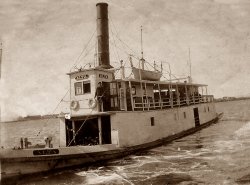
- Bank of America: 1943
- ... of ownership That building was opened in 1908 as the Humboldt Savings Bank, but it's been a BofA for many years now. In the mid ... +66 Below is the same view from September of 2009.
Humboldt Bank Building PhotoFan, it had been restored by the time I began ... Posted by Dave - 07/06/2016 - 8:09pm -
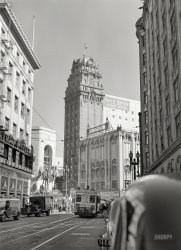
- Catch of the Day: 1908
- ... I'd venture the location portrayed is at Big Lagoon, Humboldt County, California. The link provided states that Central California ... in).
This just in This comes from a publication in Humboldt County, California. " A day's catch of Humboldt trout, June 1908. ... Posted by Dave - 09/09/2011 - 1:48pm -
![Catch of the Day: 1908 June 11, 1908. "A day's catch at Big Lagoon." View full size. U.S. Copyright Ofc.
FishLooks like trout.
Lotsa fish!Wow, think they may be a tad over their limit? Anyone know what kind of fish they caught?
Creatures from the Big LagoonThe larger fish could be steelhead (anadromous rainbow trout) if Big Lagoon had an outlet to the sea.
I would love to see the tackle used to land these fish - any other photos from this feshing expedition, Dave?
[This is all there is. - Dave]
Big LagoonGooberpea is right about the big ones being steelhead, and the smaller fish are trout. The trees appear to be redwoods along California's north coast. Perhaps "Big Lagoon" is just that; a place called Big Lagoon just north of Trinidad and Patrick's Point about 25 miles north of Eureka on Hwy 101. Could the "S" sweater be Stanford?
Big Lagoon, CaliforniaGoing by the trees in the background I'd venture the location portrayed is at Big Lagoon, Humboldt County, California. The link provided states that Central California Coastal Coho Salmon, Northern California Steelhead Rainbow Trout, and the Tidewater Goby are native fish species. Draw your own conclusions.
http://www.barstowcasinosandresort.com/biglagoon.html
The CarAny one have a guess or know for sure what it is?
[Troutmobile, with Body by Fisher. - Dave]
FishmobileWhatever car it is, these young men are probably from relatively affluent circumstances. In 1908, cars were for the wealthy, no? My guess: Cadillac.
Big LagoonMan, I love that word anadromous, and when I get to use it in a sentence, it pretty much makes my day, maybe even my week. Catadromous, however, I have never been able to successfully work into a conversation. Sure, I know once anadromous is out there, catadramous could stroll right on in, but that'd be kinda cheating.
Boustrophedon is another particular favorite.
Bigger LagoonWell, Mr. slr in tx, if a catadromous eel swam downstream to spawn and passed an anadromous salmon swimming upstream, I'd guess you'd win the dictionary lottery.
Goober Pea
Vauxhall MotorsThis car is a Vauxhall, maybe 1910. Vauxhall Motors is a UK car company, characterised by its sporting models before WW1. In 1925, Vauxhall was bought by GM.
1910 car in 1908 photo?Doubt it. Check out the 1906 Cadillacs, models G and H. Note the distinctive headlamp outline - and the split front seat. The site I found depicts these models as right-hand steering, making me wonder if the photo is reversed.
[Is the S on the jacket reversed? Also wouldn't a Cadillac (or any other non-steam car) have a radiator cap? - Dave]
White SteamerSorry, my error. Not a Vauxhall, but a White Steamer.
Steamy Photo!Yes - the "S" on the sweater is correct - the photo is not reversed. The car certainly looks like a White Steamer - Dave is right (as usual) about the radiator cap. Amazing how similar these car bodies were - check out the 1907 Caddy Model G here.
Valve stems?Can anyone tell me what the small valve stem looking objects are in-between some of the wheel spokes? Are they valve stems?
[They're clamps holding the tire on the rim. See this thread. - Dave]
White steamerThe car is a 1907 30 hp Model G White steamer or a 1908 Model K. They are basically the same in appearance.
Fish fryI hope they had a way to get all of that fish eaten! Maybe they were headed to a big fish fry or barbecue. Maybe they smoked them. I don't think there were any freezers yet, and they wouldn't have kept very long in a ice box (of which it would have taken several to put them all in).
This just inThis comes from a publication in Humboldt County, California. " A day's catch of Humboldt trout, June 1908. Casey Caldwell, Les Poland, Kenny Fenton and Cub Young with their 1904 White touring car. "
[Excellent find! What's the name and date of the publication? Was that a caption for this photo?- tterrace]
The Humboldt Historian newsletter, Spring 2009. And yes, that was a caption on the bottom of the photo.
[Thank you! - tterrace]
The White SteamerComedian Jay Leno happens to own one of those cars.
In this youtube video he shows off his 1907 White Steamer, explains how it works and take us along for a ride.
https://www.youtube.com/watch?v=LKA4cdAzsco
(The Gallery, Cars, Trucks, Buses, Sports)](https://www.shorpy.com/files/images/3b01154u.thumbnail.jpg)
- Star Vehicle: 1920
- ... not true. The 1919 newspapers all say it was filmed in Humboldt County, California, and a review of the film--recently discovered in a ... Posted by Dave - 09/13/2011 - 9:54pm -
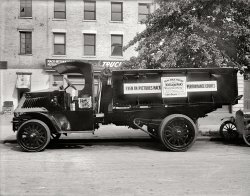
- Fort Ruby: 1868
- ... The base of the incline of the Sierra Nevada, leading into Humboldt National Forest, is only a couple football fields away from where ... Posted by Dave - 02/05/2009 - 10:22pm -
![Fort Ruby: 1868 1868. "Fort Ruby, Nevada. Photo showing two houses." Plate 112 from Geological Exploration of the Fortieth Parallel, Army Corps of Engineers. Clarence King, geologist in charge. Albumen print by Timothy H. O'Sullivan. View full size.
Dawn of suburban architectureWow. California ranch style goes a lot further back than I'd thought. Even has the pole for the basketball hoop - or is that a mercury-vapor street light?
Get me outta here.Except for the faceless wraith in the doorway, it all looks pretty cozy.
Pine Logs and Lime PlasterThe combination of homegrown and store-bought building materials is pretty typical of 1850s and 1860s Anglo-adaptations of older Mexican California vernacular architecture. In this case, instead of adobe, the walls were pine log palings, roughly squared with an adz and set upright as close to each other as was practical. The logs would have been hauled in by wagon from the nearest wooded hills, probably pretty far from the site. The gaps were infilled with lime plaster. It looks as if the whole structure got a coat of lime whitewash, which would weather back in a season or two to reveal some of the substrate materials. The six-over-six double-hung sash windows, the doors, and the milled-lumber cases for each were usually purchased as pre-assembled units from the nearest mill (probably in California), as were the thin shingles. The fireplace chimneys appear to be of unfired adobe bricks, a purely Anglo adaptation of Mexican California adobe oven technology. They closely resemble the adobe chimneys in a few contemporary Anglo-built adobe ranch houses in Southern California that are still standing.
Rain gaugeThe thing on the pole is a Dewitt conical rain gauge, probably not checked very often.
The "Worst Post in the West"Fort Ruby was built in 1862 to guard the Pony Express route, and was deactivated in 1869 when the new Transcontinental Railroad obviated the need for that service. During its seven year existence, the Army called it the "Worst Post in the West." Surprisingly, the buildings in this photo (the officers' quarters and an enlisted men's barracks) remained in use until 1992, when an electrical fire burned them to the ground. More here and here.
Timothy H. O'SullivanTimothy O'Sullivan is one of the great American photographers. Trained by Matthew Mathew Brady, he took some of the most famous Civil War photographs (especially of war dead). Besides working on Clarence King's geological exploration of the 40th Parallel, O'Sullivan also took photos for first team surveying the Panama Canal route. All this before his death in 1882 at age 42.
Home, HomeI bet a few discouraging words were heard there.
This reminds me of...a cartoon I saw years ago. A similar scene - a wooden fort in the middle of a featureless arid plain. There are the usual Indians observing from the top of a ridge, and one says to the other: "What I want to know is - where the heck do they get all that wood?"
Rethinking Ranch StyleI have to say your picture may disprove my article on the history of ranch style architecture.
I think it does still speak to ranch style as being an architecture born out of efficiency though.
[Ranch Style is named after the ranch houses of Mexico and the Old Southwest. - Dave]
Ashes by NowI lived on Fort Ruby Ranch from 1989 to 1992, right before fire destroyed the buildings in this picture. The building on the left was used on a daily basis, as a laundry room, until it burned down. It was used as a connection between the new house that was built, and another set of apartments. The officers' quarters building (building on the right) was not really used other than it housed random items that nobody ever used. My grandfather lived there for 30 years, so it was natural to have a collection.
It's funny that people think this area is "vast plains." It's very far from it. While Ruby Valley itself is very flat, it's surrounded by mountains. The base of the incline of the Sierra Nevada, leading into Humboldt National Forest, is only a couple football fields away from where these buildings once stood. There were plenty of trees around to build these buildings.
The logs were not "squared," as someone else mentioned. When I lived there, I was a curious kid. I used to spend hours in these old rickety buildings. The officers' quarters building was lucky to be standing at all. After almost 125 years, the plaster had washed away, and all that was left were the natural logs.
(The Gallery, Frontier Life, Timothy O'Sullivan)](https://www.shorpy.com/files/images/11897u1.thumbnail.jpg)
- Log Train
- Redwood logging train in Freshwater, Humboldt County, California, before 1900. Photo by Ericson of Arcata.
... Posted by kevhum - 05/27/2007 - 11:48pm -
![Log Train Redwood logging train in Freshwater, Humboldt County, California, before 1900. Photo by Ericson of Arcata.
Biggest Tree EverMan that was one big-ass tree!
Finite ResourceThat big-ass tree represents how many hundred's of year's of growth? I hope most of the redwood on this train is still in use today.
[Apostrophes don't grow on trees, either. There are two that died a needless death. - Dave]
Re: Finite ResourceUm, trees are the opposite of a finite resource. In fact they are one of the best examples of a renewable resource.
Giant RedwoodsYeah, old growth forests and giant redwoods are popping up everywhere.
Re: Giant RedwoodsThese are coast redwoods, not giant sequoias. There are more of them today than when logging began over a century ago. More than 4 million seedlings are planted every year. Redwoods are the fastest growing softwood tree in North America ... in 30 years they can grow 130 feet.
Tree'sCool. I live back east. I'm just happy when the tree in the backyard starts dropping apostrophe's.
[Apostrophes. Hundreds. Years. Aaaagh! - Dave]
(ShorpyBlog, Member Gallery)](https://www.shorpy.com/files/images/freshwater.thumbnail.jpg)
- The Pool Board: 1943
- ... the dignity of anyone other than a rail. (The old Humboldt Yard Office of the Milwaukee Road had a urinal that consisted of a ... Posted by Dave - 09/29/2013 - 11:41am -
![The Pool Board: 1943 January 1943. "Freight operations on the Indiana Harbor Belt railroad between Chicago and Hammond, Indiana. The engine crew, engineer and fireman report at the roundhouse office to be assigned their engine and given orders for the day. The cylinder at the left is the pool board; it lists the names of the men and the order and shift in which they will work." Photo by Jack Delano. View full size.
Wooden box with crankAnyone know what the wooden box with a crank handle is on the side of the desk over the trashcan? Being over the trash suggests some sort of shredder, but it's hard to imagine what they would have that needs shredding.
A little cranky?@Carey - that is a telephone ringer. Inside the box is a magneto which generates a voltage so the operator knows there is an outgoing call. I used to have one just like this, which had bells on it like the one on the desk laying horizontally. They put out a good kick if you wanted to play a joke on someone.
One long waitThe crank is almost certainly a ringer for the phone system.The wooden box is in character for the elderly, in-house phone set ups. In the early 70's, B&O trackside phones in places had a crank on a wooden box with a mouthpiece from a Laurel and Hardy flick. Penciled inside the cabinet were the different rings, for example "HB Tower:2 short; A Yard:1 long,3 short; HX Tower:1 long, to which a wiseguy added, "...and one long wait!"
To use the phone, first you'd pick it up and make sure it isn't in use, then ring the call for your party,the other end would answer with a short ring and then you talk by pressing a button. [this was to prevent background chatter; it was one big party line...] All of this was made antique collectibles by the radio, even to the removal of the phone lines themselves.
With the callboard nearby, someone in this office is a crewcaller, so the in-house phone line is for talking to the dispatcher, the trainmaster, the engine facility, etc. There also is a phone line to the outside, and if a crewman was within a certain distance from this office, callboys would go out and call at their doors. My name was on a similar board back in the "analog era". I wish I'd saved my peg.
State-of-the-Art CommunicationsThat box with the crank is a magneto generator that produces ringing current of about 108 v.a.c.
It's matched up with the three oak ringers (one on the desk, two on the wall above the window), and the oak 3-hole jack box behind the archboard on the desk. These also work with the three selector boxes between the ringers on the wall.
Apparently he has 3 phone circuits. He chooses the one he wants to use with the jack box. To make an outgoing call, he cranks the magneto. Incoming calls are announced by the ringers, and the selectors control when the ringers announce an incoming call for this office.
Information about railroad telephone equipment of this era, including links to archived user's manuals, can be found here.
If you see oneyou’ve seen 'em all. There must have been a written code somewhere that all railroads subscribed to regarding yard office ambience. They were all the same until recently. Wires and bells and speakers everywhere. Wooden floors, bare bulbs, block phones, doors that closed somewhat tightly, and restroom facilities that challenged the dignity of anyone other than a rail. (The old Humboldt Yard Office of the Milwaukee Road had a urinal that consisted of a large sheet of tin fixed to the wall that one [there were no women in those days] would pee against, and the urine would run down the tin into a horizontal length of rain gutter.) Although I can’t be certain, I’m going to guess the featured picture was taken at the IHB Blue Island yard. The two guys in the window are in their locker room, apparently waiting for a clearance and orders, or getting ready to tie up.
Carbide lampThe bright image in the lower window appears to be a carbide lamp probably an oxweld they were extremely common for that time.
Pool boardHow does the pool board work? Is it meant to be rotated when there's a shift change, so that the current shift is visible and the off-duty shift is on the "dark side"?
What information is being represented? Why are the tags in pairs - is it driver/conductor teams? Does the column of tags with labels represent assignments to trains? Is the Pool In/Pool Out like the bench?
Merch, baby!The Shorpy Store (TM) doesn't seem to stock that attractive Shorpy(R) brand wastebasket... that's a missed revenue opportunity!
The tags.As this photo was taken in a roundhouse/engine terminal office, they'd be paired for an locomotive engineer and fireman. IHB in those days was a terminal/switching road, so the assignments would most likely be for switching jobs or transfer runs.
Pool Board quick [?]On B&O at least, the engineers' pool and conductors' pools were separate. Since one pool had a few more crews than the other, this was necessary.
Engineers pools included a fireman, and later, a trainee, while the conductors turns showed the head brakeman,flagman, and in 1943, maybe a swingman. If a position was vacant, no peg was there. Bulletins were issued weekly advertising vacancies on regular jobs/pool crew and new jobs.
If you look to the right side of that board, those tags seem to show regular train or probably yard assignments; these would show the engineer, fireman, conductor [yard foreman on B&O] and the switchmen.
In practice, if a man was off, i.e. sick or vacation, etc., his tag was removed from his regular assignment and shown in what ever status. Somewhere on that board are extra boards for engineers, road conductors, brakemen, etc. As these extra men are called, their pegs are placed on the appropriate job with its regular men; when their trip is over, they are marked back up on the extra list at the bottom.
Note there is a window behind the board; this way a man can look at the board to see where he "stands" as he marks up, and see where everyone else is too. (The crews were kept on the other side of the window. Time slips, orders, etc. were handed through the "dutch window" above the caller's head.An experienced man could look this board over and tell you what job he's working tomorrow, and what job you're working too.[Sorry, Dave. This is about as quick as I could make this...]
(Technology, The Gallery, Jack Delano, Railroads)](https://www.shorpy.com/files/images/SHORPY_8d24378a.thumbnail.jpg)
- Minnesota Merc: 1954
- ...
I know where you are That is looking north towards Humboldt yard and the mainline for the Paynesville sub. I run CP trains that ... Posted by mpcdsp - 10/06/2013 - 12:22pm -
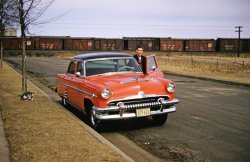
- One Room Schoolhouse
- Pepperwood School in Pepperwood, Humboldt County, California. Pre turn of century? Photo by Freeman Art Co.
... Posted by kevhum - 05/18/2007 - 1:03am -
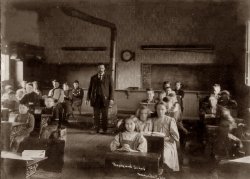
- New Train: 1911
- No. 11 built at the shops in Samoa, Humboldt County, California. Taken in Samoa, 1911ish. Oregon Eureka Railroad ... Posted by kevhum - 09/23/2011 - 12:02am -
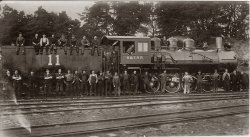
- slow car, fast train
- This photo was maybe taken by Loleta, Calif in Humboldt County. The car appears to have gotten tangled up with a train. Looks ... Posted by kevhum - 07/03/2007 - 8:10am -
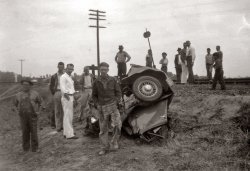
- Redwood Tree
- ... No chainsaws then. Most likely Humbolt [or would that be Humboldt, with a D?] County, California.
Location Looks like pre 20th ... Posted by kevhum - 05/17/2007 - 12:46am -
- Fields Landing
- ... This is the town of Fields Landing on north side of Humboldt Bay in Calif. The main road that goes to the foot of the bay leads to ... Posted by kevhum - 05/15/2007 - 11:55pm -
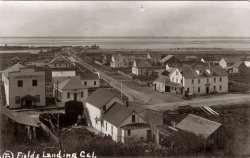
- mill town
- Train in the mill town of Korbel, in Humboldt County, California, on the Arcata Mad river railroad. Taken about ... Posted by kevhum - 05/27/2007 - 11:45pm -
- Logging: 1904
- Logging crew at minor mill cook house in Glendale, Humboldt County, California. 1904 photo by Seely Bros.
(ShorpyBlog, Member ... Posted by kevhum - 05/18/2007 - 12:58am -

- River Dam
- Swasey Dam on Mad River in Humboldt County, California. Year and photographer unknown.
(ShorpyBlog, ... Posted by kevhum - 05/18/2007 - 1:06am -
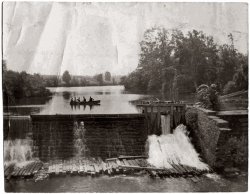
- mill
- This is lumber mill in Glendale Humboldt County, Calif. Someone had written on the picture "first picture of ... Posted by kevhum - 05/16/2007 - 12:16am -
- Camp 4
- ... ranch, 1906. This camp is above Minor Mill in Glendale, Humboldt County, Calif.
(ShorpyBlog, Member Gallery) ... Posted by kevhum - 05/26/2007 - 1:13am -
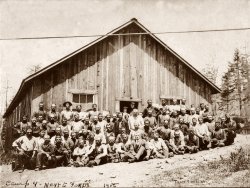
- Dr. and Mrs. Lurie: 1953
- ... life. He became a dentist and practiced in Chicago in the Humboldt Park neighborhood. Later the family moved to Albany Park and lived at ... Posted by here in van nuys - 01/22/2016 - 7:24pm -
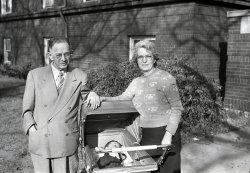
- camp one
- ... the canyon a mile and a half above Minor Mill in Glendale, Humboldt County, Calif. Taken in 1886 to 1887. Photographer unknown to me.
... Posted by kevhum - 05/26/2007 - 1:13am -
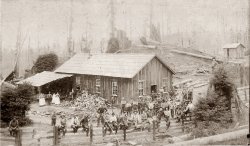
- The Rexo Team: 192x
- ... baseball league. He was the team manager. They played in Humboldt Park and Garfield Park on Chicago's West side. When the gambling got ... Posted by Shutan.com - 03/02/2018 - 8:41pm -
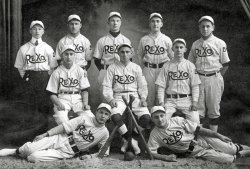
























![Redwood Tree This is a redwood tree ready to be felled. No chainsaws then. Most likely Humbolt [or would that be Humboldt, with a D?] County, California.
LocationLooks like pre 20th century and could have been virtually anywhere in the redwood region from Del Norte County down to Santa Cruz.
All along the coastmid to late 1800s is good guess. Could actually be anywhere along the California coast between the Oregon border and Santa Cruz. Looks like it might be a drier redwood site - no ferns visible. Trees aren't real giants. Great piece of logging history, though.
Don Hall
Yreka, CA
(ShorpyBlog, Member Gallery)](https://www.shorpy.com/files/images/tree3.thumbnail.JPG)
